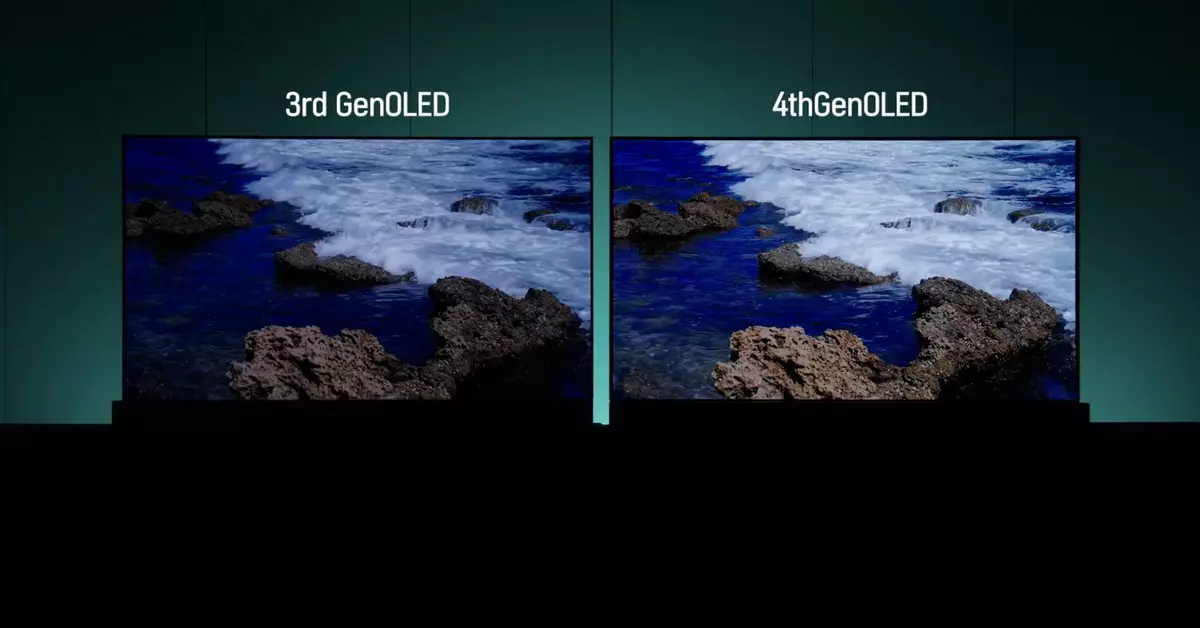LG Display’s presence at this year’s Consumer Electronics Show (CES) marked a departure from its usual showcase of revolutionary advancements in display technology. Surprisingly, it was Panasonic that took the lead in revealing the details of the latest OLED panel innovation set to disrupt the market. This development highlighted an intriguing collaboration between two giants, showcasing LG Display’s newest offerings indirectly through Panasonic’s flagship products, like the Z95B model. This unusual turn of events set the stage for an in-depth exploration of LG’s cutting-edge four-layer tandem OLED design, a significant step forward in the pursuit of brighter and more vibrant displays.
At the heart of LG Display’s innovation lies the Primary RGB Tandem structure—this proprietary technology represents a fundamental redesign aiming to enhance both brightness and energy efficiency. Previously, LG’s OLED design utilized a three-stack light source which limited its capacity to maximize brightness. The new four-layer configuration, however, introduces two additional layers of blue elements alongside the traditional red and green layers. This innovative arrangement allows for a greater light output, thereby improving the overall brightness of the OLED display.
The claim that this new panel is 33 percent brighter than its predecessors and can achieve peak brightness levels of 4,000 nits certainly makes waves, yet such claims need context. While these figures are impressive, they are contingent upon various factors, including the specific implementations by TV manufacturers. The OLED landscape is fiercely competitive, with Samsung’s QD-OLED display technologies also vying for consumer attention by promising unmatched brightness levels—raising the stakes in this ongoing battle for supremacy in vibrant display quality.
One of the more curious elements in LG Display’s promotional materials was the reference to the AI era. While this mention may raise skepticism among some technology enthusiasts, it nonetheless emphasizes the brand’s commitment to integrating advanced technologies into their displays. Such enhancements aim not only to optimize brightness but also to tailor the visual experience to a higher degree of personalization, potentially transforming how consumers interact with their devices.
Moreover, LG Display maintains its commitment to core OLED strengths, such as delivering perfect blacks and outstanding viewing angles—features that have won hearts of cinephiles and gamers alike. These attributes remain crucial as manufacturers face increasing pressure to deliver more than just brightness, ensuring that they retain and enhance other critical components of the viewing experience.
The fourth-generation OLED panels also promise improved energy efficiency, a vital consideration given the increasing environmental focus within the tech industry. With peak brightness figures reaching up to 2,100 nits for color brightness—an impressive 40 percent increase over previous models—these displays are not only brighter but also more capable of maintaining that brightness without demanding excessive energy consumption. This kind of sustainability is not just attractive to environmentally conscious consumers, but also to manufacturers looking to lower production costs and enhance the marketability of their products.
Despite these advancements, it’s essential for prospective buyers to recognize that these peak brightness levels might not always translate into standard consumer usage. Manufacturers like Panasonic may be hesitant to fully leverage the panel’s capabilities in everyday televisions. The challenge lies in balancing technological prowess with practical application, a theme that is becoming increasingly relevant as consumers demand more from their home entertainment setups.
Overall, LG Display’s new four-layer tandem OLED design represents a significant leap forward in display technology, pushing the boundaries of brightness, energy efficiency, and viewer experience. With continued competition in the OLED market, particularly from Samsung’s innovative QD-OLED displays, LG’s latest offering will need to not only shine in laboratory conditions but also perform remarkably in real-world settings. As technology evolves, consumers can look forward to a future filled with brighter, more energy-efficient displays that provide unparalleled cinematic experiences. Investing in such advancements may well be worth it for those who appreciate the nuances of high-quality visuals in their home environments.


Leave a Reply